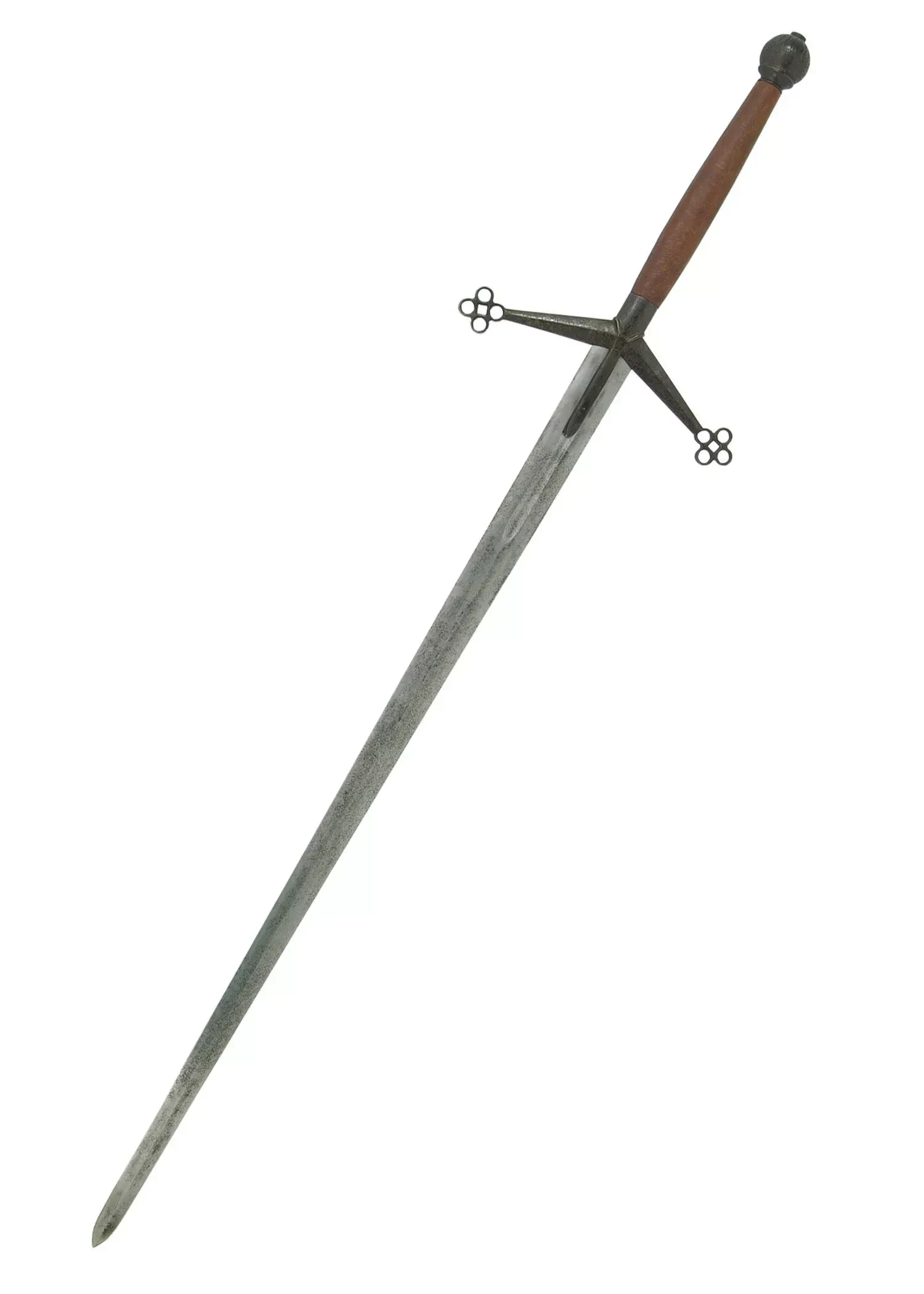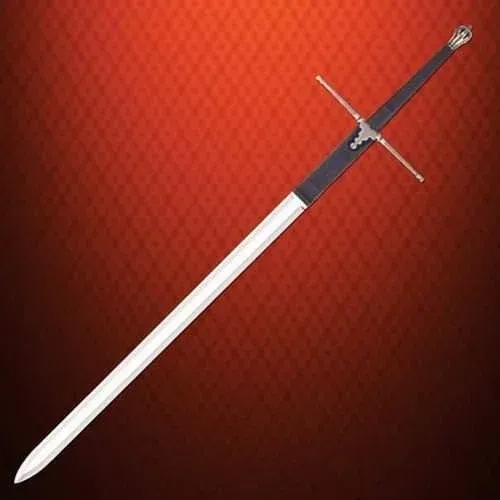What is the Claymore Sword?
The Claymore sword is one of the most iconic symbols of Scottish medieval history. Known for being one of the most impressive and lethal weapons of its time, this two-handed sword is associated with the bravery of Scottish warriors and their historic battles. Throughout this article, we will explore its origin, characteristics, service history, and relevance in the modern world.
Origin and Meaning of the Name
The term "Claymore" comes from the Scottish Gaelic "claidheamh mòr", which translates to "great sword" or "big sword." Another term used is "claidheamh dà làmh", meaning "two-handed sword." These names highlight its imposing size and design, which was intended for two-handed combat—a key innovation in medieval battles.

Main Characteristics of the Claymore Sword
- Design and Construction: The Claymore is a double-edged sword designed to be wielded with both hands. Its characteristic long hilt allows for greater control, while the guard in the shape of an inverted cross provides a powerful quillon that blocks and deflects enemy attacks.
- Length and Weight: On average, the sword measures 1.5 meters and weighs between 1.5 and 2 kilograms. However, some extremely large versions could reach up to 2.24 meters in length and weigh approximately 10 kilograms. This size made it especially intimidating on the battlefield.
- Manufacturing Materials: Most Claymores were forged from high-quality steel, ensuring superior strength. Additionally, many of these swords included decorations inspired by Scottish culture, such as Celtic crosses and rampant lions. These ornaments reflect both the artistry and warrior spirit of Scotland.
A Glimpse into its History
The Claymore sword played a prominent role in the armed conflicts of the Middle Ages, particularly in battles between Scotland and England during the 13th century. It was the weapon of choice for Scottish clans, known for their courage and combat prowess. A notable historical example is the sword associated with William Wallace, the Scottish hero who led the revolt against Edward I of England. Wallace is famously remembered for wielding a greatsword that symbolized both his determination and the resilience of the Scottish people.

Use in Combat
The design of the Claymore made it ideal for close combat. Its cross-shaped guard allowed warriors to easily block enemy attacks, while its double-edged blade provided a lethal advantage. This combination of defensive and offensive strength made the Claymore a feared weapon on the battlefield. Moreover, its large size and weight required skill and strength, meaning those who wielded it were truly experts.
The Claymore in Modern Times
Today, the Claymore sword has transcended its original function as a weapon to become a decorative and cultural element. Many modern replicas are made of carbon steel, combining functionality and aesthetics. These reproductions are highly valued by collectors, medieval history enthusiasts, and lovers of historical weaponry.
Additionally, the Claymore remains a symbol of resilience and national pride in Scotland, appearing in ceremonies, films, and historical events as a representation of the Scottish cultural legacy.
Comparative Table: Classic and Modern Specifications
| Feature | Classic Claymore Sword | Modern Claymore Sword |
| Material | Forged steel | Carbon steel |
| Length | 1.5 – 2.24 meters | 1 – 1.5 meters |
| Weight | 1.5 – 10 kg | 1 – 3 kg |
| Use | Combat | Decorative and functional |
The Claymore sword is not just a relic of the past but also a living legacy that connects us to the history and culture of Scotland. Thanks to its unparalleled design, it continues to inspire admiration worldwide. Its symbolism, combat effectiveness, and aesthetic value make it one of the most emblematic weapons of the Middle Ages.
















